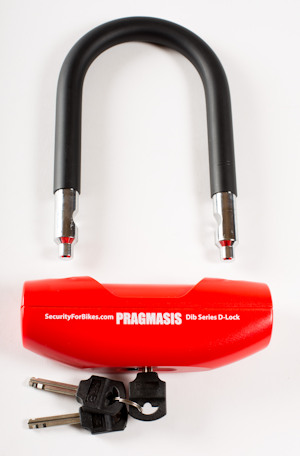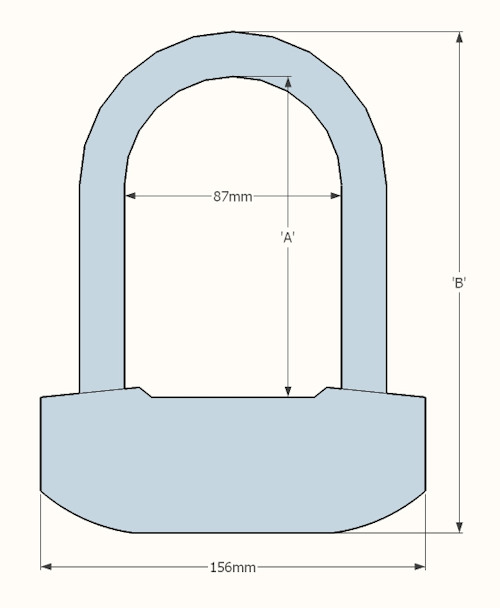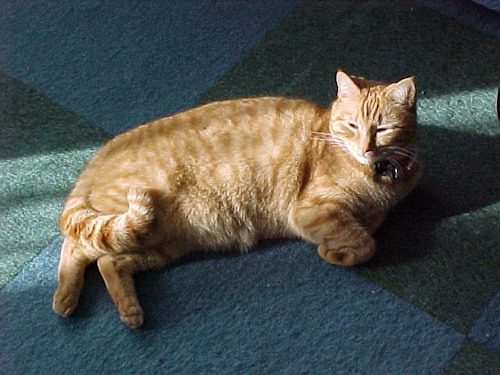Buy Online
- Package Deals
- Extreme Security Chain and Lock Deals
- High Security Chain and Lock Deals
- Medium Security Chain and Lock Deals
- Security Chain and Multiple Lock Deals
- Shed Shackle, Protector Chain and Lock Deals
- Door Security Package Deals
- Ground Anchors
- Chains (without padlocks)
- Shed Shackle
- Padlocks
- Anti-Pinch Pin
- Door Security
- Extras and Upgrades
- Fitting Kits
- Hardware, Fixings, Drills
- Chain Offcuts & Sleeves
- Alvecote Wood Related
Your Cart
Information
DIB-Series D-Locks
 This page provides details on the SecurityForBikes DIB-Series D-locks.
This page provides details on the SecurityForBikes DIB-Series D-locks.
- DIB D-Lock Suitability
- DIB D-Lock Overview **Video**
- Dimensions & Technical Information
- Security Ratings/Approvals
- Keyed Alike?
- Using a D-Lock
- Number of Keys and Spare Key Blanks
- Why is it called the DIB D-Lock?
DIB D-Lock Suitability
The SFB DIB-Series compact D-Locks are proper Motorcycle-grade D-Locks, available in three sizes: 130mm x 87mm internal clearance, 190mm x 87mm internal clearance and (*NEW*) 260mm x 87mm internal clearance.
Far superior to the vast majority of D-Locks on the market, these have a true 16mm-thick double-locking hardened steel shackle that is guaranteed impossible to bolt-crop by hand(*). These also have the same type of anti-pick disc-style cylinder inside as our SFB RoundLock. These D-Locks are made for us in Taiwan.
These are recommended for use for motorcycle and high-end bicycle security or similar applications, with the D-Locks on their own and/or with the Protector 11mm/13mm/16mm chains. The compact size and modest weight mean these can be very practical for portable security as well as at home.
Lock dimensions, weights and other technical details are listed below.
(* - Impossible to bolt-crop by hand with standard manual croppers up to and including the Irwin Record 42".)
DIB D-Lock Overview
Dimensions & Technical Information
| Lock Model No. | Shackle Type | Body Width | Body Thickness | Shackle Diameter | Vertical Shackle Clearance | Horizontal Shackle Clearance |
| SFB DIB-130 D-Lock | D-Lock | 156 | 40 | 16.0 (+) | 130 | 87 |
| SFB DIB-190 D-Lock | D-Lock | 156 | 40 | 16.0 (+) | 190 | 87 |
| SFB DIB-260 D-Lock | D-Lock | 156 | 40 | 16.0 (+) | 260 | 87 |
| (+) The DIB D-Locks have a 16mm-thick hardened alloy steel shackle plus a rubber covering that is approximately 18.2mm diameter overall. | ||||||

The diagram above shows our SFB DIB D-Lock overall dimensions, with the following table summarising the differences between models:
| Lock Model No. | 'A' | 'B' | Weight |
|---|---|---|---|
| SFB DIB-130 D-Lock | 130mm | 205mm | 1.5kg |
| SFB DIB-190 D-Lock | 190mm | 265mm | 1.7kg |
| SFB DIB-260 D-Lock | 260mm | 335mm | 1.92kg |
Details common to DIB D-Locks:
- Mechanism: Disc detainer anti-pick cylinder with 9 discs, protected by rotating anti-drill hardened alloy steel plate
- Shackle: Hardened steel, 16mm diameter
- Shackle Material: Customised S2 alloy steel
- Body: Heavy duty hardened steel lock tube with improved design alloy insert. Sliding keyway cover to protect the cylinder from ingress of dirt.
The exploded view above shows our SFB DIB D-Lock internal design. Note the double-locking mechanism with opposing plungers and ball bearings that slide inside the lock insert, that itself sits inside the hardened steel lock tube. The cylinder operates a cam and is protected by a rotating anti-drill hardened steel plate.
Security Ratings/Approvals
The SFB DIB D-Locks have the following approvals: Sold Secure Motorcycle Gold, Bicycle Gold, Quad/ATV Gold, Motor Scooter Gold and are also Police Preferred Specification. (Approvals are pending for the DIB-260.)
Keyed Alike?
Our SFB RoundLocks and DIB Series D-Locks can be supplied at initial order as a keyed-alike set. This means you can have a single key operating a pair of RoundLocks and a DIB D-Lock, for example. This keyed-alike option is only possible at the time of the initial order; it is not possible to key-match a previously-supplied RoundLock or DIB D-Lock.
Using a D-Lock
D-locks, otherwise known as U-locks, are useful compromises between security and weight for carrying. They are available in a range of sizes and security levels, with only the best, such as our DIB-Series D-Locks, being recommended for high-value items such as motorbikes and valuable bicycles. However, it is important that they are used correctly.
Low grade D-locks are commonly attacked by thieves by twisting them. If you loop a D-lock through some railings and around the seat tube on a bike, for example, and if you leave a lot of spare room in the 'D', it is easy for a thief to insert a piece of timber, scaffold pole, or other strong lever through the 'D' and to apply a large twisting force to the lock. With enough space to use a big lever and with enough leverage applied, lower grade locks will fail. There are also miniature bottle jacks that can be inserted within the 'D' if you leave enough room and that can also cause lesser D-Locks to fail.
It is therefore important that you don't purchase a lock that is too large (as that creates more space in the 'D') and it is crucial that you fill as much of the 'D' as possible. This is less of an issue with the DIB-Series D-Locks, since they are so much tougher than the vast majority of D-Locks on the market, but is good practice nevertheless.
When used to secure a bicycle, you can fill the space by looping the lock around the bicycle wheel as well as the seat tube, and by going through two or three railings rather than one, for example. Ideally, and especially if you have quick-release wheels, it is advisable to remove the front wheel and to lock it and the rear wheel and definitely the frame to an immovable object. The front wheel then helps to fill space inside the 'D' as well as being protected itself. Compact and Mini-D locks such as our DIB-130 and DIB-190 D-Locks reduce this vulnerability through only having a small opening within the 'D'. Despite this, and as mentioned already, it is still good practice to try to fill that space as much as possible.
A D-lock can be used to lock a chain by simply looping links of the chain over the leg(s) of the 'D'. Note that only high-grade D-locks with 16mm or thicker shackle and Motorcycle Gold approval should be considered for motorcycle security as lesser D-Locks will likely be the weak link when paired with a 16mm chain, for instance. A 19mm or thicker chain should generally be locked with a close-fitting closed shackle padlock, and not a D-Lock, for a similar reason. Of course, you do improve your security by using a chain and padlock and a D-lock as well.
Number of Keys and Spare Key Blanks
Our SFB RoundLocks and DIB-Series D-Locks are supplied with three keys each. A keyed-alike set of RoundLocks/DIB D-Locks will have three keys for each lock in the set (e.g. a keyed alike set of two RoundLocks is supplied with a total of 6 keys).
Spare key blanks are available to order.
Why is it called the DIB D-Lock?

We were thinking of names for the new D-Lock just around the time that our elderly ginger cat, called Willoughby, passed away. He was one month short of being 22 years old. We often called him "Willow", or sometimes "Dibbleby", or "Dib". We thought it would be nice to remember him by naming the locks after him: the Dibbleby D-Lock, or just the Dib.
